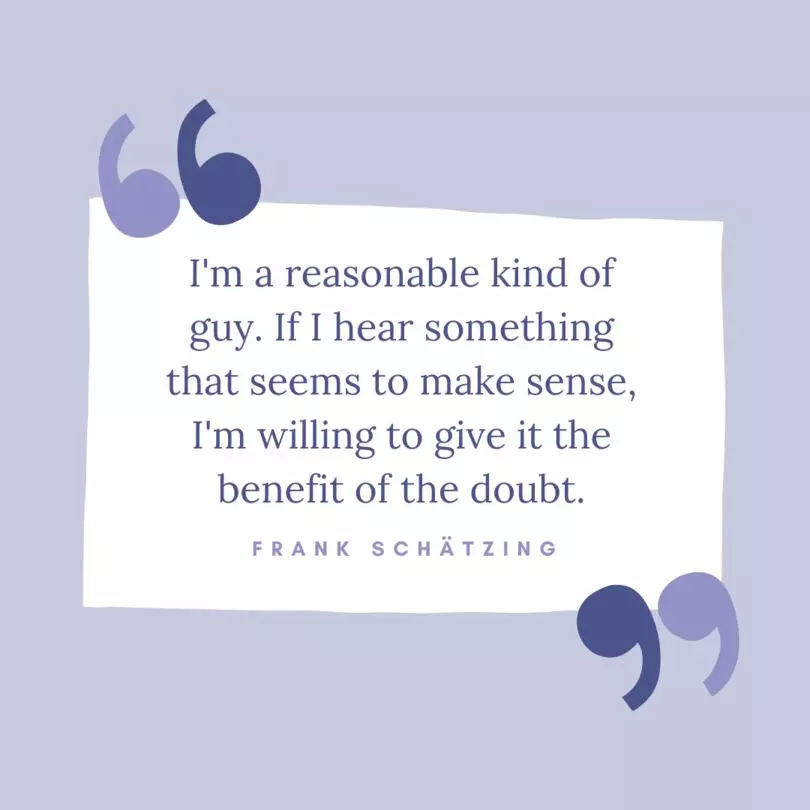A Stunning Journey into Chaos and Complexity – A Review of Frank Schätzing’s “The Tyranny of the Butterfly”
In the realm of modern literature that explores the intricacies of chaos theory, climate change, and the ever-rippling consequences of human actions, Frank Schätzing’s “The Tyranny of the Butterfly” stands as a monumental work that takes readers on a breathtaking journey through the complexities of our interconnected world. With prose that is both sweeping and deeply rooted in scientific knowledge, Schätzing crafts a narrative that challenges our understanding of the environment, technology, and the enduring power of nature.

Unveiling the Stunning Intricacies of Chaos: The World of “The Tyranny of the Butterfly”
Imagine a world where seemingly unrelated events are intricately connected, where the flapping of a butterfly’s wings can set off a chain reaction that alters the course of global events. “The Tyranny of the Butterfly” immerses us in this world, where a group of scientists and environmentalists grapple with the looming crisis of climate change and the unforeseen consequences of their actions. Schätzing’s narrative takes us on a journey through the complex web of chaos theory, where the smallest actions can have far-reaching and unpredictable effects.
The setting of “The Tyranny of the Butterfly” becomes more than a backdrop; it’s a reflection of our interconnected world and the delicate balance of nature. Schätzing’s prose paints a vivid picture of the beauty and fragility of our planet, creating an atmosphere that is both awe-inspiring and sobering.
Characters in the Spotlight: A Symphony of Complexity
The heart of “The Tyranny of the Butterfly” lies within its characters, each representing a facet of the human experience and the complexities of our relationship with the environment. Scientists, environmentalists, and ordinary people become vessels for readers to explore themes of responsibility, innovation, and the consequences of our actions. Their journeys mirror the broader human quest to understand and mitigate the impact of climate change.
Other characters, such as corporate executives and politicians, provide contrasting perspectives on themes of greed, short-sightedness, and the challenges of enacting meaningful change. Schätzing’s portrayal of these characters serves as a mirror to the complexities of human nature and the ways in which individuals and institutions grapple with the urgent need for environmental stewardship.
Themes of Chaos and Consequence: Insights Explored
“Unraveling the tapestry of chaos and consequence,” Schätzing seems to say, as he delves into themes that resonate deeply with the human experience. The theme of chaos is central to the narrative, as the characters confront the unpredictable and often overwhelming nature of our interconnected world. Schätzing’s exploration of chaos theory prompts readers to reflect on the ways in which seemingly small actions can have profound and unforeseen effects.
Consequence is another prominent theme that surfaces throughout the narrative. Schätzing’s portrayal of the far-reaching consequences of human actions, particularly in the context of climate change, serves as a stark reminder of the urgency of addressing environmental issues. The tension between the complexity of our world and the need for responsible stewardship creates a narrative that is both harrowing and thought-provoking.
Prose as a Tapestry of Science and Imagination: Schätzing’s Writing Style
Frank Schätzing’s writing style in “The Tyranny of the Butterfly” is a tapestry of science and imagination, a blend of meticulous research and imaginative storytelling that captures the complexity of our world and the possibilities it holds. His language is both informative and evocative, creating an atmosphere that immerses readers in the intricacies of climate science, technology, and the wonders of nature. Schätzing’s prose carries a weight that conveys the urgency of addressing environmental issues and the beauty of the natural world.
The novel’s structure is deliberate, with each chapter presenting a new facet of the characters’ journeys and the unfolding global crisis. Schätzing’s writing style reflects the intricacies of our interconnected world, where events and actions are interwoven in a delicate dance, creating a narrative that is both informative and emotionally resonant.

Notable Quotes from “The Tyranny of the Butterfly” by Frank Schätzing
- “Sometimes, the most dangerous things are the ones that seem the most harmless.”
- Explanation: This quote underscores a central theme of the novel—how seemingly benign advancements in technology can have unforeseen and potentially catastrophic consequences. It reflects the story’s exploration of the ethical and moral dilemmas posed by scientific progress.
- “The future is not something that happens to us, but something we create.”
- Explanation: This quote highlights the power of human agency and responsibility in shaping the future. It aligns with the novel’s message that individuals and societies must actively engage with and direct the course of technological and scientific developments.
- “What if our greatest innovations became our worst nightmares?”
- Explanation: This quote encapsulates the tension between innovation and danger. The novel delves into the darker side of technological advancements, questioning the potential risks and ethical implications of pushing the boundaries of science.
- “In the quest for knowledge, we often forget the cost of what we might discover.”
- Explanation: This quote reflects on the pursuit of knowledge and the potential dangers of unchecked curiosity. It serves as a cautionary reminder that the quest for scientific and technological breakthroughs can come with significant risks and moral costs.
- “Humanity’s strength lies in its diversity and its ability to adapt.”
- Explanation: This quote emphasizes the importance of diversity and adaptability in facing challenges. In the context of the novel, it suggests that embracing different perspectives and being flexible in our approaches are key to navigating the complexities of technological advancements.
Trivia Facts about “The Tyranny of the Butterfly” by Frank Schätzing
- Publication Year: “The Tyranny of the Butterfly” was published in 2018. It adds to Frank Schätzing’s repertoire of thought-provoking and science-oriented thrillers, following the success of his previous works like “The Swarm.”
- AI and Ethical Dilemmas: The novel delves into contemporary issues surrounding artificial intelligence and the ethical dilemmas it presents. Schätzing explores the potential consequences of AI’s rapid advancement, making the book highly relevant to current technological debates.
- Setting: The story is set in California and follows the protagonist, Luther Opoku, a sheriff in a small town. The setting provides a contrast between the quiet, rural life and the high-tech world that intrudes upon it.
- Genre: “The Tyranny of the Butterfly” is a techno-thriller, blending elements of science fiction with a suspenseful narrative. Schätzing’s detailed research and plausible scenarios create a compelling and realistic depiction of near-future technology.
- Themes: The novel tackles themes such as the power and potential dangers of AI, the impact of technological progress on humanity, and the moral responsibilities of those who develop and use advanced technologies. It questions how far society should go in its pursuit of knowledge and control over nature.
Timeless Relevance: Today’s Reflections
While “The Tyranny of the Butterfly” is rooted in its modern context, its exploration of chaos theory, climate change, and the consequences of human actions remains relevant in the contemporary world. In an era marked by discussions of environmental sustainability, technological innovation, and the urgency of addressing climate change, Schätzing’s examination of these themes offers a timeless perspective.
The theme of chaos and its connection to the environment continues to resonate, as individuals and societies grapple with questions of how to address the complex and often overwhelming challenges of climate change. Schätzing’s portrayal of the interconnectedness of our world serves as a reminder of the need for responsible environmental stewardship.
Final Thoughts on “The Tyranny of the Butterfly” : An Epic Odyssey of Complexity
“The Tyranny of the Butterfly” is an epic odyssey that invites readers to embark on a breathtaking journey through the complexities of our interconnected world, where chaos, consequence, and responsibility intersect. Frank Schätzing’s narrative is a thought-provoking exploration of the urgent need for environmental stewardship, where the consequences of our actions are both daunting and hopeful.
As readers journey through the world of “The Tyranny of the Butterfly,” they are reminded of the power of literature to challenge our understanding of the environment, to inspire action in the face of global challenges, and to prompt us to reflect on the enduring beauty and complexity of our planet. Schätzing’s prose becomes a catalyst for change, a call to action in a world marked by both peril and potential. “The Tyranny of the Butterfly” is a testament to the enduring relevance of questions that define our era and an invitation to navigate the depths of our interconnected world with both awe and responsibility.
More Reviews of Works by Frank Schätzing
“Death and the Devil” by Frank Schätzing: A Riveting Thriller That Explores the Depths of Good and Evil My Takeaways…
“The Swarm” by Frank Schätzing – An Eco-Thriller that Dives into the Depths of Imagination In the vast sea of…

